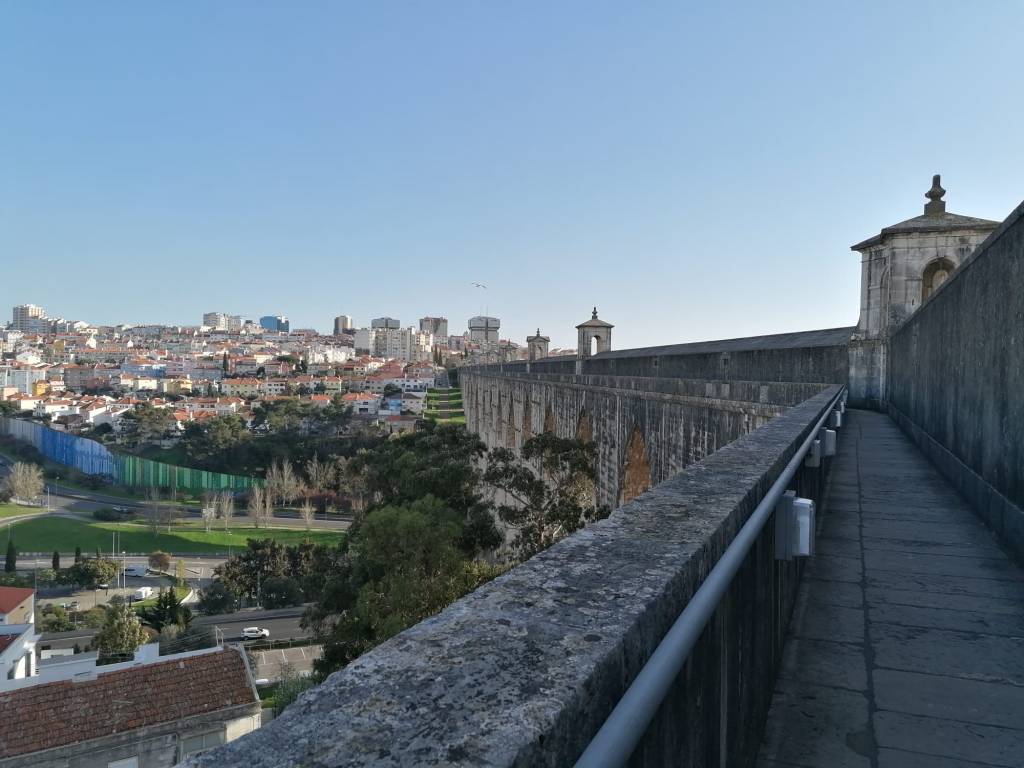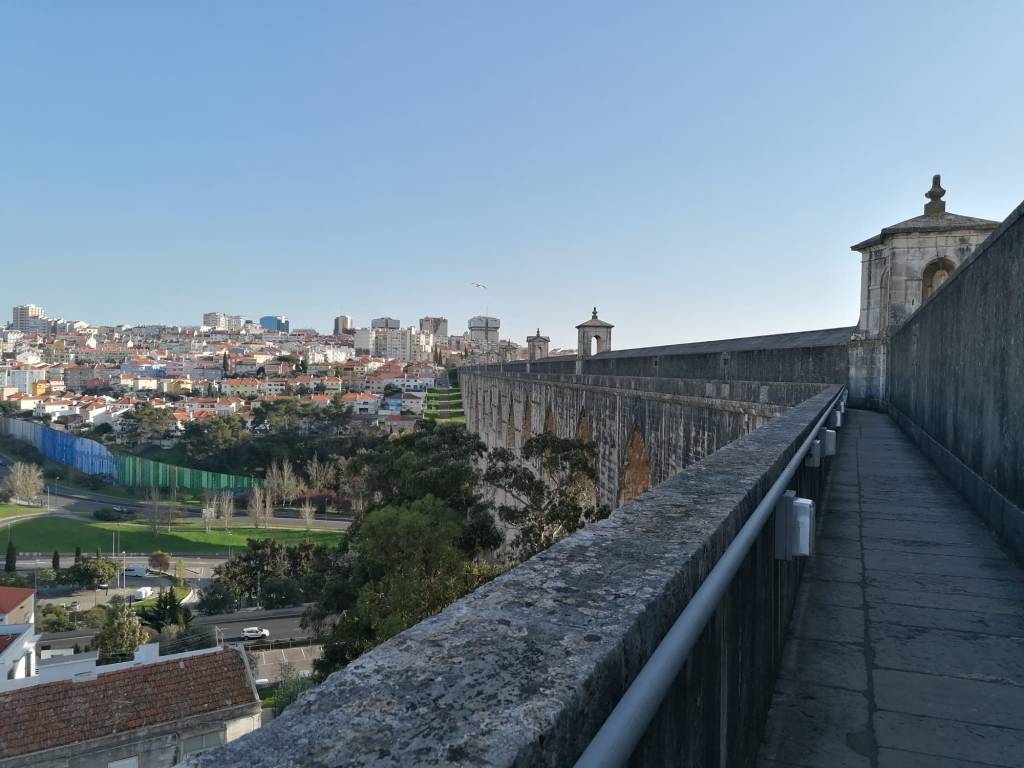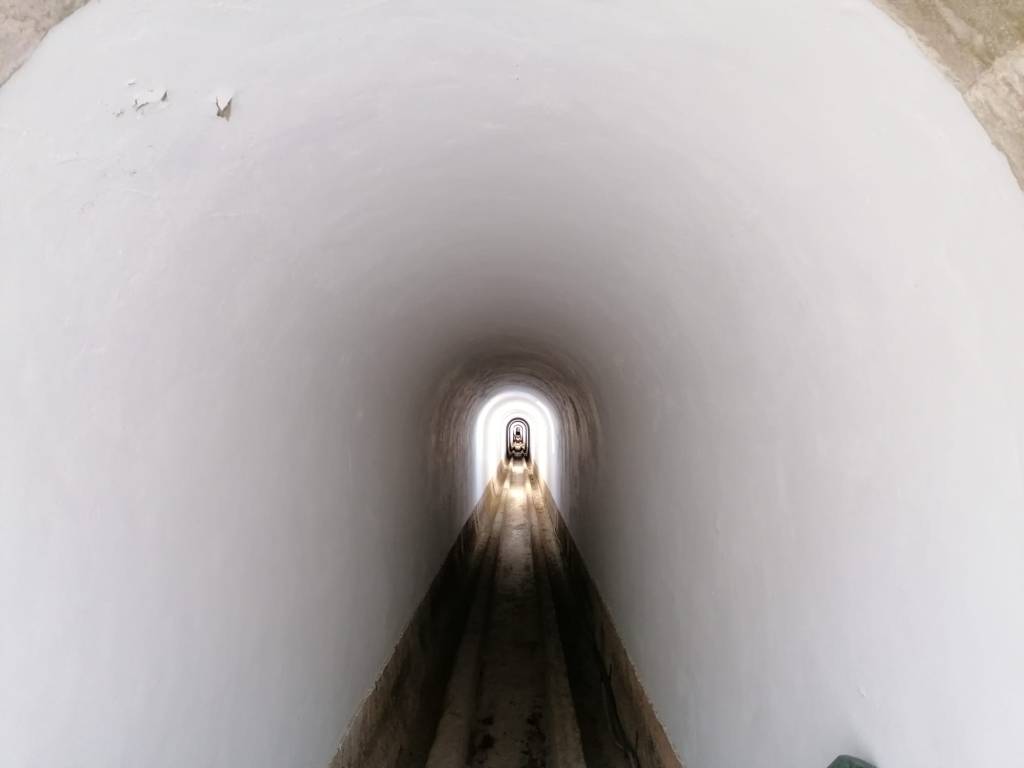
Having resided in Lisbon for over a year now – and with much of that spent under lockdown – I am delighted to make new discoveries on about a weekly basis. Most recently, that was the fact that it is possible to walk along the Lisbon aqueduct, or Águas Livres Aqueduct.
This aqueduct is an amazing piece of architecture, spanning some of the main traffic arteries of Lisbon and providing a bridge between the neighbourhoods of Amoreiras and Campolide in the north-west of the city. Water was first piped into the city by the Romans, with the aqueduct we see today completed during the 18th century. Somehow, it managed to survive the massive earthquake of 1755, which destroyed much of the capital.
I had assumed that the aqueduct would be closed to the public, but actually you can access it by way of the water museum, or Museu da Água. You’ll find the unassuming entrance about a 10-minute walk from the large Amoreiras shopping centre – it’s can be a bit tricky to find, but the exact address is Rua Vila Santos 6, 1070-068 Lisboa, Portugal.

From here, you walk into a small garden, and pay the very reasonable fee of two euros (students) or four euros (regular price) for entrance to the museum, which really just consists of some placards with information about the aqueduct’s history followed by entrance onto the aqueduct itself.
On top of the aqueduct, you get amazing views of the valley below.


About halfway along, you can pass through an arch to the other side, where you get to see the other side of the valley (near Monsanto park):


You can finish it off with a great view of the Ponto de 25 Abril, the famous Golden Gate Bridge-esque construction that traverses the River Tejo in the distance:

In short, many people don’t know that it’s possible to do this, and you get such amazing views of the city. I highly recommend it as a cheap, small excursion with a big reward.